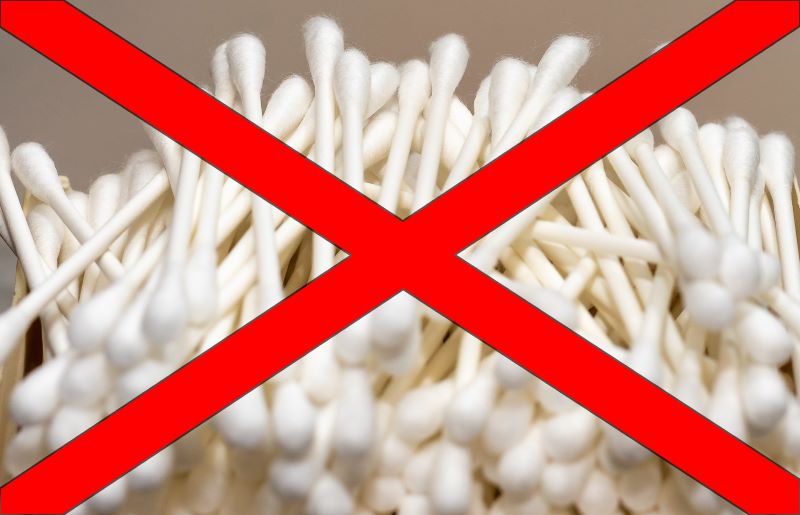Yeah, maybe earwax is a little repellent, but it actually is useful to your body. Like anything, however, sometimes too much is too much, and too little can be indications of other issues.
Let the professionals at Beltone Tristate help you better understand this naturally occurring phenomenon.
What is earwax for?
Earwax, also known as cerumen (from the latin word “cera,” which means, you guessed it, “wax”), is a naturally occurring substance in the body.
Your body has sweat and sebaceous glands in the walls of your outer ear canals that secrete a fatty substance that is essentially the beginnings of earwax. This fatty substance will mix with dead skin cells, dirt, hair, and other substances to form what we know as earwax.
And it’s not a pointless process. In fact, it’s considered to be a pretty beneficial one. The act of gathering the hair, dirt, and dead skin cells actually protects your body from those substances entering your inner ear, and studies indicate that earwax even has antifungal and antibacterial properties, meaning that it protects you from potentially harmful infections.
Are there different types of earwax?
The short answer is yes! The reason that earwax can become visible or even feel like it is filling your ear canals is because of jaw movement that occurs from speaking and chewing actually moves the substance through the ear canal. It gets exposed to air, somewhat dries, and usually flakes off of the ear.
Studies also show that your ethnicity can often dictate what type of earwax you might have. For instance, researchers have found that people of East Asian descent are more likely to have dry earwax over people of other origins.
However, if you’re someone who has a skin condition like eczema or psoriasis, then you’re also likely to have hard earwax versus those who do not, and some people are simply born with a tendency that causes their bodies to produce a wetter or a drier type of earwax.
If you’re someone who has ears that don’t produce enough earwax, or if you’re overcleaning them, then you’re likely to have itchy, irritated, and dry feeling ears that cause you discomfort.
“Don’t put anything in your ear smaller than your elbow”. Resist the urge to clean your ears with cotton swabs
We know. We know. This is a tough one. But hear us out.
Most of us were raised to clean our ears out with a cotton swab. Wax was considered gross and unseemly, and should be removed accordingly. What we didn’t realize was that this act actually does more harm than good.
Despite what your cotton swabs might look like after you’ve used them to clean your ears, you’re also doing something else — pushing wax deeper into the ear canals, which causes blockage, can inhibit hearing, and can even lead to earaches.
What’s more, by removing that layer of wax with the antibacterial and antifungal properties, you’re increasing the risk of potential ear infection, which can cause you a whole host of problems.
If you really believe you must have your ears cleaned, we recommend that you ask your family doctor or see a professional at Beltone Tristate. We have professionals who specialize in this procedure or who can point you in the appropriate direction to get you the remedy appropriate for you. We do not recommend ear candling, as these can actually damage your eardrum. In short, don’t stick things in your ears, unless advised to do so by a hearing care provider or another qualified medical professional. They have the tools, training, and experience in carrying out this delicate act, and they can even identify any potential health issues by evaluating your ears’ health.
How does earwax affect hearing aid wearers?
Believe it or not, despite its general health benefits, earwax can wreak havoc on hearing technology if it isn’t properly maintained.
Whenever we fit patients with new hearing aids, we always supply them with a hearing aid cleaning kit as well as the training needed to help them care for their devices at home.
Earwax can build up in certain parts of the devices — like the earmolds, tubing, and ventings for example — and cause blockage or even damage, due to its acidic nature.
Additionally, some experts believe that wearing hearing aids can sometimes stimulate the production of earwax, which can be a good thing. Brushing the tips of your hearing aids daily, whether you see visible debris or not, may help to prevent any accumulation and will keep your devices working their best. Also, we recommend that you take the time to clean your ears regularly, with “regularly” aligning with whatever makes sense according to your body’s production of cerumen. By partnering with your Beltone professional, you can together determine the schedule and method that works best for you.
Additionally, in order to get the most out of your devices, including lifespan and optimum performance, we recommend getting your technology professionally cleaned right here at Beltone Tristate about two to three times per year.
We can determine if you need new tubing or other adjustments, and make sure that your devices are doing everything they should for your hearing.
Have more questions about hearing and hearing technology? Call Beltone Tristate TODAY for your FREE hearing test!

